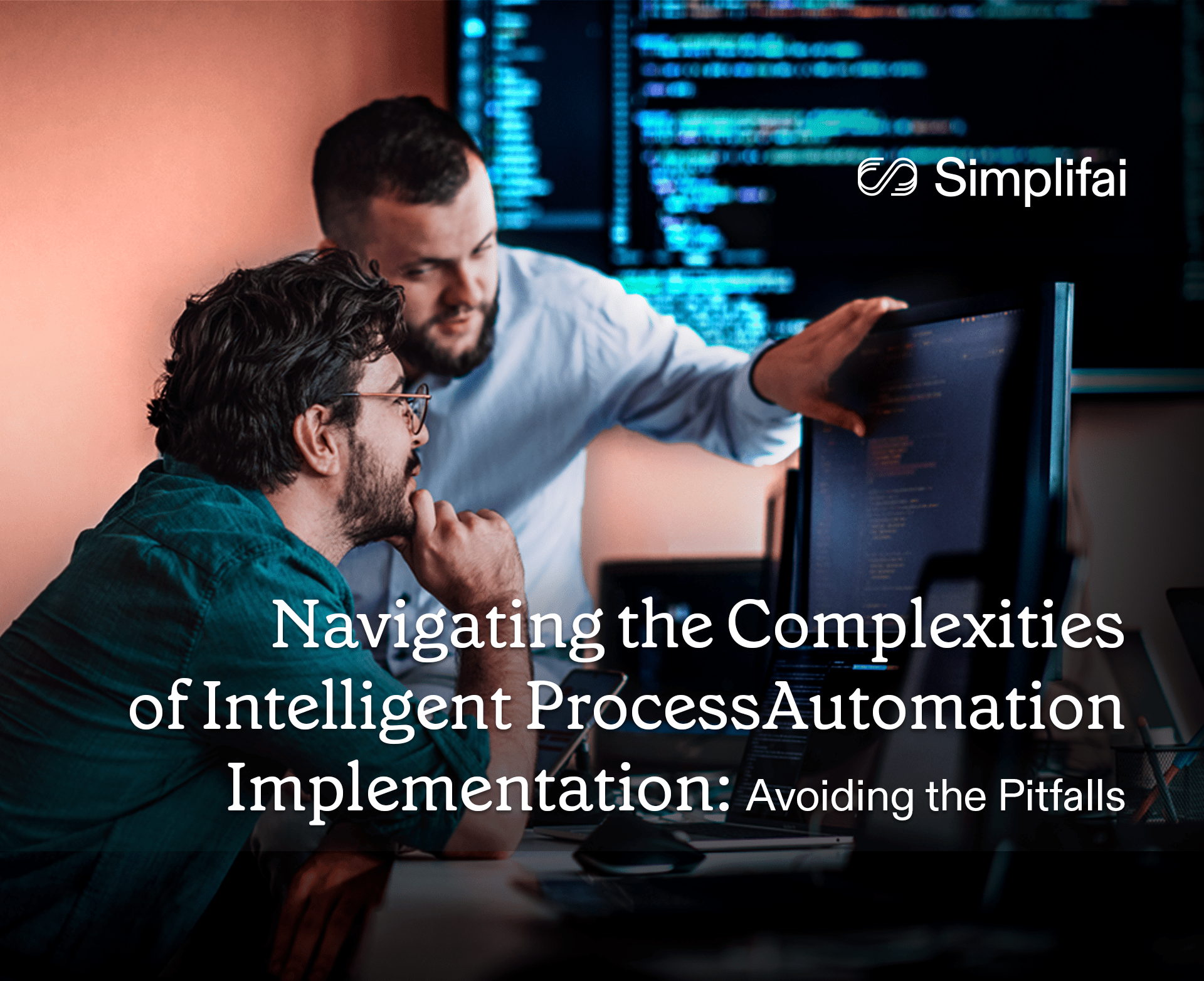Navigating the Complexities of Intelligent Process Automation Implementation: Avoiding the Pitfalls
The successful deployment of IPA solutions necessitates a keen understanding of these potential pitfalls, their underlying causes, and the repercussions they may have on business objectives.

Intelligent Process Automation (IPA) stands out as a transformative force in the business world, offering the promise of streamlined operations, significant cost reductions, and enhanced customer experiences. However, the path to achieving these benefits is often riddled with challenges that can hinder progress, escalate costs, and, in worst-case scenarios, culminate in project failure.

The successful deployment of IPA solutions necessitates a keen understanding of these potential pitfalls, their underlying causes, and the repercussions they may have on business objectives. This guide aims to shed light on the common obstacles encountered during the IPA implementation process and offers insight into how businesses can navigate these challenges effectively.
Lack of Clear Business Goals
A prevalent pitfall in many IPA initiatives is embarking on the journey without clearly defined business goals. Companies often fall into the trap of pursuing automation for the sake of technology itself, without a solid blueprint of what they aim to achieve. This lack of direction can lead to misallocated resources and projects that do not align with the company’s broader strategic vision. An illustrative example is deploying a customer service chatbot without specific performance targets, leading to a tool that, while technologically sound, does not measurably improve customer satisfaction or operational efficiency.
Underestimating the Skill Gap
A significant underestimation of the skill gap required to implement and leverage IPA technology effectively is another critical oversight. Many organizations fail to recognize the breadth of expertise needed to integrate new automation solutions seamlessly. This oversight can lead to delays, increased costs for external expertise, and a workforce struggling to adapt to new technologies. A proactive approach, including a thorough assessment of existing skills, targeted training, and strategic hiring, is essential to bridge this gap and ensure a smooth transition. Also, businesses can look for no-code AI tools like Simplifai AI Automation Platform that require no additional skills like technical understanding to implement automation successfully.
Ignoring Technology Compatibility and Limitations
Ignoring the potential compatibility issues and limitations of new IPA technologies with existing IT infrastructure is a pitfall that can stall even the most well-intentioned automation projects. Organizations might encounter unforeseen technical barriers, such as incompatible legacy systems that require extensive work to integrate with new automation tools. Early and thorough technology assessments, involving IT stakeholders from the outset, are crucial to identifying and addressing these roadblocks before they escalate into more significant issues.
Overlooking the Scope of the Project
Another common mistake is misjudging the project’s scope, either by being overly ambitious or too cautious. Companies may aim to automate too many processes at once without considering the complexity and resource requirements, leading to project overload and unmet objectives. Conversely, too narrow a focus can limit the impact of automation efforts. Establishing a phased approach, starting with high-impact areas, and expanding based on early successes, can help manage the project scope effectively.
Neglecting Legacy System Integration
The challenge of integrating IPA solutions with existing legacy systems cannot be overstated. These foundational systems, crucial to daily operations, may not be readily adaptable to new automation technologies, posing significant hurdles to IPA integration efforts. Without a strategic plan for legacy system integration, businesses may face costly and time-consuming upgrades or custom development work. Employing middleware solutions or adopting incremental modernization strategies can alleviate these integration challenges.
Overlooking Third-Party System Integration
Failing to account for the integration capabilities with third-party systems is another pitfall that can complicate IPA projects. Many businesses rely on external platforms for essential services, and these may not seamlessly integrate with chosen IPA solutions. For example, a retail company seeking to automate its supply chain processes might find its efforts thwarted by incompatible third-party logistics software. Early dialogue with vendors and detailed planning for system integration are vital steps to ensure that automation efforts are not hindered by external dependencies.
Choosing the Wrong Technology Vendor
The selection of a technology vendor is a critical decision in the IPA implementation process, and making the wrong choice is a pitfall with long-lasting repercussions. The allure of ambitious sales pitches can lead companies to partner with vendors whose solutions do not align with their specific needs or who fail to provide adequate ongoing support. Thorough due diligence, focusing on the vendor’s track record, the flexibility of their solutions, and their support infrastructure, is paramount to avoid the pitfalls of a poor vendor partnership.
Charting the Path to IPA Success
As we’ve explored, the path to successful IPA implementation is not a straightforward one. It requires a deep understanding of your business’s unique needs, a clear-eyed assessment of the technological landscape, and a steadfast commitment to bridging skill gaps and integrating systems seamlessly.
The journey is as much about the technology itself as it is about the people who deploy and interact with it daily. Embracing a culture of continuous learning, openness to change, and strategic innovation is key to navigating the complexities of IPA.
Remember, the goal is not just to automate but to elevate—transforming processes in ways that bring real value to your business and its stakeholders. As you embark on this journey, let the challenges be a roadmap rather than roadblocks, guiding your strategy with insights that ensure a resilient, adaptive, and ultimately successful IPA implementation.
Sources:
[1] Gartner Identifies the Top Strategic Technology Trends for 2021


